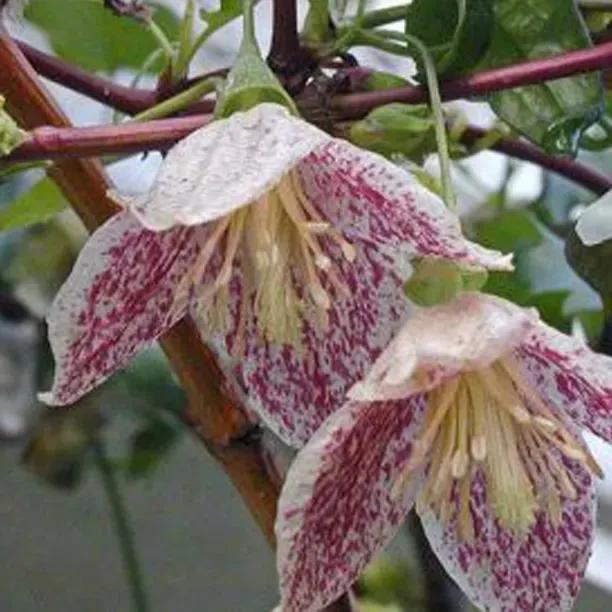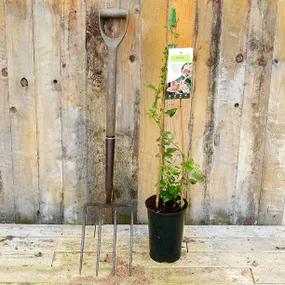Freckles Clematis, Winter Flowering
Honest Delivery PricesClematis cirrhosa var. purpurescens
- Bell-shaped, speckled cream flowers
- Citrus Scented
- Dainty evergreen leaves
- Flowers Nov - Feb
- Height and spread up to 4m x 2m
- Type: Cirrhosa
- Habit: Climber
- Pruning group 1
- Good for bees.
- RHS Award of Garden Merit
Recommended extras
Description
Clematis cirrhosa var purpurescens Freckles: Evergreen & Winter Flowering. Pot Grown Plants
Freckles brings a splash of Mediterranean warmth to your garden in winter and early spring, with its unusual speckled flowers. These early blooms will brighten your garden and attract bees at a sparse time of year. The leaves are evergreen, with a bronze tint in winter. They are quite delicate, almost fern-like.
At its best over an arch or pergola to really show off the speckled interior of the flower, and its lemony scent. Also looks great along a wall or trellis behind a border. It will grow up to about 4m high with a spread of 2m.
Browse our Clematis collection.
Features:
- Bell-shaped cream flowers with red-brown speckles on the interior side
- Flowers November to February
- Scented: Citrus-like
- Dainty evergreen leaves with a bronze tinge in winter
- Height x spread: Up to 4m x 2m
- Rated H4: treat as half-hardy. Prefers plenty of sun
- Type: Cirrhosa
- Habit: Climber
- Pruning group 1
- RHS Award of Garden Merit
Growing Freckles Clematis
Freckles will be happiest in alkaline or neutral soil. Being of Balearic Mediterranean origin, it will prefer a warm, sunny corner of your garden. As long as it has sun and good shelter from the wind and frost, it should be fine to grow in most parts of Scotland.
It won't rampage quite as vigorously as some other Clematis, so you won't need to cut it back except to maintain and tidy mature plants.
Did You Know?
Clematis cirrhosa originates in Southern Europe and North Africa, hence its tender nature. It was collected in Mallorca by the then curator of Chelsea Physic Garden, Allen Paterson. The seeds were passed on to the famed clematis grower Raymond Evison, who released it in the late 1980's and named it 'Freckles' after his daughter Rebecca. The name 'Clematis' is of Greek origin, from the word 'Klema' meaning vine-like.
Images supplied by Clematis on the Web.
Planting Instructions
How to grow Clematis cirrhosa:
This evergreen clematis is rated H4 (-10 to -5), hardy through most of the UK. Treat it as half-hardy, preferring a sheltered, sunny spot. In the North, it likes a cosy urban microclimate, ideally the South facing wall of a heated building. This bit of protection should keep the foliage and flowers in good condition. It may become dormant in a summer heat wave, this is normal, and it will immediately grow again when the weather cools.
- Pruning Group 1: Pruning is not essential, but removal of the dead, damaged and unproductive old stems will keep the plant healthy and encourage vigorous growth.
- It likes close to full sun on its leaves, and full shade around the base and roots.
- Keep root zone cool with a mulch, other plants or pebbles. A big slab of stone is good, but be sure that water flows under it.
- Feed and mulch after flowering.
Look out for:
Clematis slime flux. It's an uncommon bacterial infection but can be fatal. It happens when the plant has an injury and bacteria infect the wound. Signs include wilting and yellowing of the leaves, as well as the unpleasant slime in the stems where the plant is affected. Earwigs, aphids, and fungal infections can also affect Clematis. It does not suffer from Clematis wilt.



